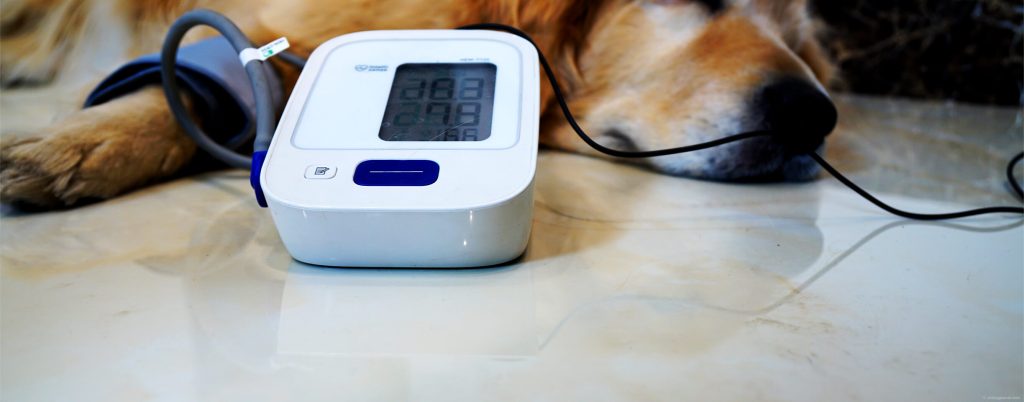Table of Contents
ToggleThis blog post will start with symptoms of enlarged spleen in dogs, explore causes of enlarged spleen in dogs, diagnosis of dog enlarged spleen, dog enlarged spleen treatment, diet for dog with enlarged spleen and enlarged spleen in dogs’ life expectancy.
What is an enlarged spleen in dogs
Dog enlarged spleen, also known as splenomegaly in dogs, are frequently affected not only by pathological changes in the spleen, but also by lymphoid diseases and other illnesses.
It is possible for both young and old dogs to develop canine enlarged spleen caused by contagion. If cancer is the cause of the swelling, the risk is much higher in older and larger dogs.
According to clinical records, certain breeds, such as the German Shepherd, Labrador, Golden Retriever, and Great Dane, have a higher incidence of old dog with enlarged spleen than others, the majority of which cause splenomegaly due to splenic angiosarcoma. The Wheaton Terrier is more likely than other breeds to develop a malignant tumor in dogs with splenomegaly.
How serious is an enlarged spleen in a dog?
Let’s figure out what happens when a dog has an enlarged spleen.
First, splenomegaly may reduce the number of healthy red blood cells, platelets, and white blood cells in the bloodstream, making infections and serious complications more common.
Worse, the severely enlarged spleen may rupture at any time, resulting in intra-abdominal bleeding and endangering the dog’s life. If the splenomegaly is caused by a cancerous tumor, it is essentially a death sentence for the dog in the coming months.
Symptoms of spleen problems in dogs
If you suspect spleen issues in dogs, please refer to the following symptoms of enlarged spleen in dogs for further information:
-
Abdominal enlargement (with pain)
-
Lose weight
-
Diarrhea
-
Hemoglobinuria (discoloration of urine, red or dark brown)
-
Intermittent vomiting
-
Anorexia
-
Lethargy & decreased activity
-
If the enlarged spleen is caused by splenic volvulus, it may also have the following symptoms:
> Pale gums > Jaundice (most easily seen in the gums, which turn yellow) > Polyuria & polydipsia (excessive urination and excessive drinking)
What causes enlarged spleen in dogs
In dogs, the spleen is a major source of immune cells. These immune cells fight against various pathogens in the blood, such as viruses, bacteria, and parasites. Spleen enlargement is also linked to the immune system’s blood and lymph.
What would cause an enlarged spleen in an older dog? A 2021 retrospective study found that splenic lymphoid hyperplasia was the most common disease causing splenomegaly (15/44, 34%), and hemangiosarcoma (HSA, malignant hemangioendothelioma or angiosarcoma) was the most common malignant tumor that caused splenomegaly (5/44, 11%).
Here is a list of reasons for enlarged spleen in dogs:
-
Splenic lymphoid hyperplasia
Simply put, the number of lymphocytes has increased above the normal range.
-
Neoplastic (Tumor)
-
Splenic torsion
Torsion of the spleen is a condition in which the spleen twists around its own blood vessels. It is sometimes associated with gastric dilatation-volvulus (GDV) syndrome. It can happen suddenly, or it can twist gradually over time.
-
Abdominal injury
-
Infectious canine hepatitis
Infectious canine hepatitis (ICH) is an infectious disease that causes mild fever, mucosal congestion, leukopenia, and coagulation problems in dogs.
-
Parasitic infection
-
Bacterial infections
Particularly long-term chronic infection, such as chronic uterine infection in unneutered female dogs, will invade the spleen for an extended period of time, accumulate lesions, and gradually form chronic splenomegaly, which has no obvious symptoms at first. Surgical resection is frequently required when symptoms appear.
-
Eosinophilic enteritis
The inner layers of the stomach and intestines of dogs are infiltrated by certain types of white blood cells. Higher odds in German Shepherds, Rottweilers, Soft-Coated Wheaten Terriers, and Shar Pei
Diagnosis of dog enlarged spleen
1. Palpation
The spleen is located in the upper quarter of the dog’s left abdomen. A normal spleen is a flat structure that can be felt. When the spleen is significantly enlarged, it is usually easy to detect and feels swollen or bumpy. It should be noted that palpation alone cannot determine whether a dog has an enlarged spleen. According to veterinary experts’ clinical experience, not all enlarged spleens can be palpated, and not all palpable spleens are abnormal.
2. Dog enlarged spleen blood test
CBC (Complete Blood Count)
Cost
Around US $180
How long to get result
0.5 - 2 hours
A typical splenomegaly may show the following features on CBC:
- White blood cell (WBC) +
- Red blood cell (RBC) –
- Hemoglobin (HGB) –
- Hematocrit (HCT) –
- Nucleated red blood cells (NRBC) +
- Platelet –
3. Serum biochemistry profile
Serum Biochemistry
Cost
Around US $180
How long to get result
2 - 3 hours
- Hypercalcemia: indicating risk of lymphoma and multiple myeloma.
- Hyperglobulinemia: Significant signal in cancer dogs.
- Alkaline phosphatase +: most commonly reported in cancer dogs.
- ALP (alkaline phosphatase), ALT (alanine transaminase), AST (aspartate aminotransferase) ,and Total Bilirubin +: hepatobiliary disorders and liver dysfunction.
- Urea and Creatinine +: ongoing renal failure.
4. Urinalysis
Urinalysis
Cost
Around US $80
How long to get result
0.5 - 1 hours
A typical splenomegaly may show the following features on urinalysis:
- High specific gravity: A high specific gravity indicates that the urine is very concentrated, which can be caused by not drinking enough fluid, excessive fluid loss (excessive vomiting, sweating, or diarrhea), or substances (such as sugar or protein) in the urine.
- Hematuria: the presence of blood in the dog’s urine
- Proteinuria: An increase in protein levels in the urine. This condition may indicate kidney damage.
- Bilirubinuria: the presence of bilirubin in the urine. It is the first clinical sign of a serious underlying hepatobiliary disorder.
5. Imaging
X-ray, CT or Ultrasound
Cost
X-RAY......................US $200-400
ULTRASOUND........US $300-500
CT.........................US $800-1,200
How long to get result
0.5 - 1 hours
Imaging diagnosis, which is a very effective diagnostic method, can directly observe whether the spleen appears the symptoms of enlargement and mass.
6. Bone marrow aspirates or core biopsy specimens
Biopsy
Cost
Around US $400
How long to get result
Around 7 days (external lab)
The cause of the enlarged spleen can be more accurately diagnosed when the results of the biopsy and blood analysis are combined and analyzed.
Spleen pain in dogs
Is an enlarged spleen painful for dogs? An enlarged spleen can be painful for dogs because it puts pressure on the abdomen, and some dogs develop ascites, which can cause pressure pain as well.
In general, pain relievers will be considered for the dog after a veterinarian’s evaluation. Because an enlarged spleen is a very dangerous condition, dog owners are advised not to give their dogs any pain relievers without the permission of the vet.
Dog enlarged spleen treatment
1. Typical treatment
Although enlarged spleen is dangerous, fortunately, in most cases, a dog can survive without a spleen, so after splenomegaly is diagnosed, veterinarians usually choose to surgically remove the spleen, usually preferred to remove only cancerous, ruptured or twisted spleen.
2. Enlarged spleen in dogs natural treatment
this is a topic that many people are looking for answers to, unfortunately, based on my review of a lot of data, so far, I have not found any clinical evidence other than surgical resection. Implement effective natural treatment. However, there is still some hope:
Polysaccharopeptide
There is no denying that some brave trailblazers have been hard at work researching and exploring new treatments for hemangiosarcoma, the most common malignancy that causes splenomegaly.
The results of an extract of polysaccharopeptide from Coriolus versicolor mushroom (commonly known as the Yunzhi mushroom) used to treat hemangiosarcoma at the University of Pennsylvania show some promise, though the study is small and not fully representative.
Yunnan Baiyao
Yunnan Baiyao, a Chinese herbal medicine supplement, is prescribed by many oncology veterinarians.
There is some evidence that it can reduce or stop bleeding and promote healing in some cancer lesions, but current research is limited and needs to be expanded, as well as more extensive clinical studies to demonstrate its specific therapeutic efficacy.
What to feed dog with enlarged spleen
In the previous chapter, we discussed the causes of splenomegaly, one of which is persistent bacterial or viral infection. Based on my own and other dog owners’ experiences, I have the following rules of diet for dog with enlarged spleen:
-
Clean water & food bowls daily
To reduce the intake of bacteria and viruses in the diet, clean all water and food bowls on a daily basis. Although dietary bacteria and viruses do not directly attack the blood, lymph, or spleen, this cleaning procedure is still required due to the already severe immune burden in dogs with splenomegaly.
-
Feed clean water
Make clean drinking water available. If you are unsure whether your current water source is clean enough, you can substitute bottled drinking water. Please avoid using mineral-enriched drinking water, which may put additional strain on dogs' kidneys.
-
Raw food is not permitted
Raw food is a risky choice for dogs with splenomegaly because it overloads the immune system and puts them at risk.
-
Dog food with high digestibility
Feeding AAFCO-compliant dog food with high digestibility reduces the strain on the dog's digestive system.
-
Anthocyanins
Feed the dog an adequate amount of anthocyanin-rich food. Anthocyanins have been shown in some studies to protect the spleen and increase lymphocyte proliferation. Blueberries are a very safe anthocyanin source for dogs, with an anthocyanin content of up to 386.6mg/100g. A daily intake of 20-30 grams (about 1 ounce) of blueberries can meet an 85-pound dog's anthocyanin needs.
Enlarged spleen in dogs’ life expectancy
Dog owners are very concerned about how long can a dog live with an enlarged spleen.
Typically, dogs with non-neoplastic splenomegaly usually continues to survive for 10-14 months after surgical treatment
In the case of neoplastic splenomegaly, the dog’s life expectancy after surgery and chemotherapy is not ideal.
Especially for angiosarcoma, a very serious and debilitating cancer causing enlarged spleen in dogs. The average life expectancy of patients diagnosed with angiosarcoma is only about 3 months.
Chemotherapy may prolong survival in angiosarcoma, and it is recommended that an oncologist be consulted after a diagnosis of angiosarcoma to evaluate whether further treatment is appropriate for your dog. Some dog patients tolerate chemotherapy well, while others experience nausea, vomiting, or compromised immune function.
Wrap up
Spleen issues in dogs do not cause symptoms until the spleen enlarges or even ruptured in some dogs, particularly senior large dogs.
The dog may eat normally, without vomiting or diarrhea, and appear as healthy as a dog with a normal spleen for a long time until symptoms.
If the enlargement of the spleen is caused by cancer, the cancer cells have been growing in his body for a long time when the symptoms of splenomegaly appear.
We recommend annual physicals for dogs beginning at age 5 to detect spleen problems early with X-rays or ultrasound before complications and spread, as most splenic cancers have a poor prognosis because they have spread by the time they are diagnosed.




